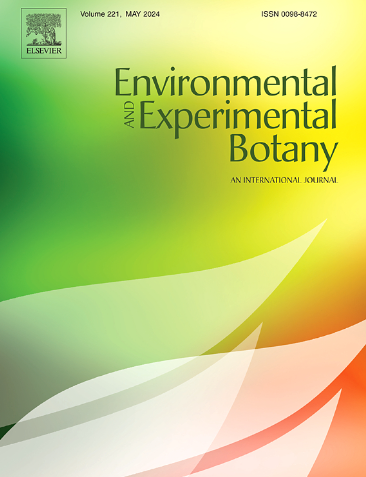Iron deficiency specifically activated anthocyanin accumulation in out pericarp of red-fleshed kiwifruit (Actinidia chinensis)
IF 4.7
2区 生物学
Q2 ENVIRONMENTAL SCIENCES
引用次数: 0
Abstract
The typical feature of red-fleshed Actinidia chinensis is the radical redness of the locules in the inner pericarp. However, in commercial orchards, we observed that kiwifruit on vines exhibiting leaf chlorosis symptoms also showed an extension of reddish flesh to the outer pericarp. The mechanisms linking anthocyanin accumulation in the outer pericarp of kiwifruit with leaf chlorosis remain poorly understood. Through establishment of the field and callus treatment experiments under iron deficiency, we analyzed element contents, fruit quality and differentially expressed genes, and confirmed that iron deficiency contributes to both the anthocyanin accumulation in the outer pericarp and the chlorosis symptoms in the leaves and fruit. Additionally, we found that genes involved in anthocyanin biosynthesis, as well as MYB75, were significantly activated, with MYB75 playing a key role in activating many of these genes. Two DELLA proteins of GA pathway were significantly induced, while LBD37like, a repressor of anthocyanin pathway, was inhibited by iron deficiency. A lot of iron transporters and storage proteins related to iron deficiency responses were identified in the over-reddened fruit. These discoveries enhance our understanding of anthocyanin regulation under iron deprivation and provide insights into how fruit responds to iron deficiency.
缺铁特异性激活红肉猕猴桃果皮花青素积累
红肉猕猴桃的典型特征是内果皮的小室泛红。然而,在商业果园中,我们观察到猕猴桃在葡萄藤上表现出叶片褪绿症状,也表现出红色果肉延伸到外果皮。猕猴桃外果皮花青素积累与叶片褪绿之间的联系机制尚不清楚。通过建立缺铁条件下的大田和愈伤组织处理实验,分析了元素含量、果实品质和差异表达基因,证实缺铁既导致了外果皮花青素的积累,也导致了叶片和果实的黄化症状。此外,我们发现参与花青素生物合成的基因以及MYB75被显著激活,MYB75在激活许多这些基因中起着关键作用。GA通路的两种DELLA蛋白被显著诱导,而花青素通路的抑制因子lbd37样则被缺铁抑制。在过红果实中发现了大量与缺铁反应相关的铁转运蛋白和储存蛋白。这些发现增强了我们对缺铁条件下花青素调节的理解,并为水果对缺铁的反应提供了见解。
本文章由计算机程序翻译,如有差异,请以英文原文为准。
求助全文
约1分钟内获得全文
求助全文
来源期刊

Environmental and Experimental Botany
环境科学-环境科学
CiteScore
9.30
自引率
5.30%
发文量
342
审稿时长
26 days
期刊介绍:
Environmental and Experimental Botany (EEB) publishes research papers on the physical, chemical, biological, molecular mechanisms and processes involved in the responses of plants to their environment.
In addition to research papers, the journal includes review articles. Submission is in agreement with the Editors-in-Chief.
The Journal also publishes special issues which are built by invited guest editors and are related to the main themes of EEB.
The areas covered by the Journal include:
(1) Responses of plants to heavy metals and pollutants
(2) Plant/water interactions (salinity, drought, flooding)
(3) Responses of plants to radiations ranging from UV-B to infrared
(4) Plant/atmosphere relations (ozone, CO2 , temperature)
(5) Global change impacts on plant ecophysiology
(6) Biotic interactions involving environmental factors.
 求助内容:
求助内容: 应助结果提醒方式:
应助结果提醒方式:


